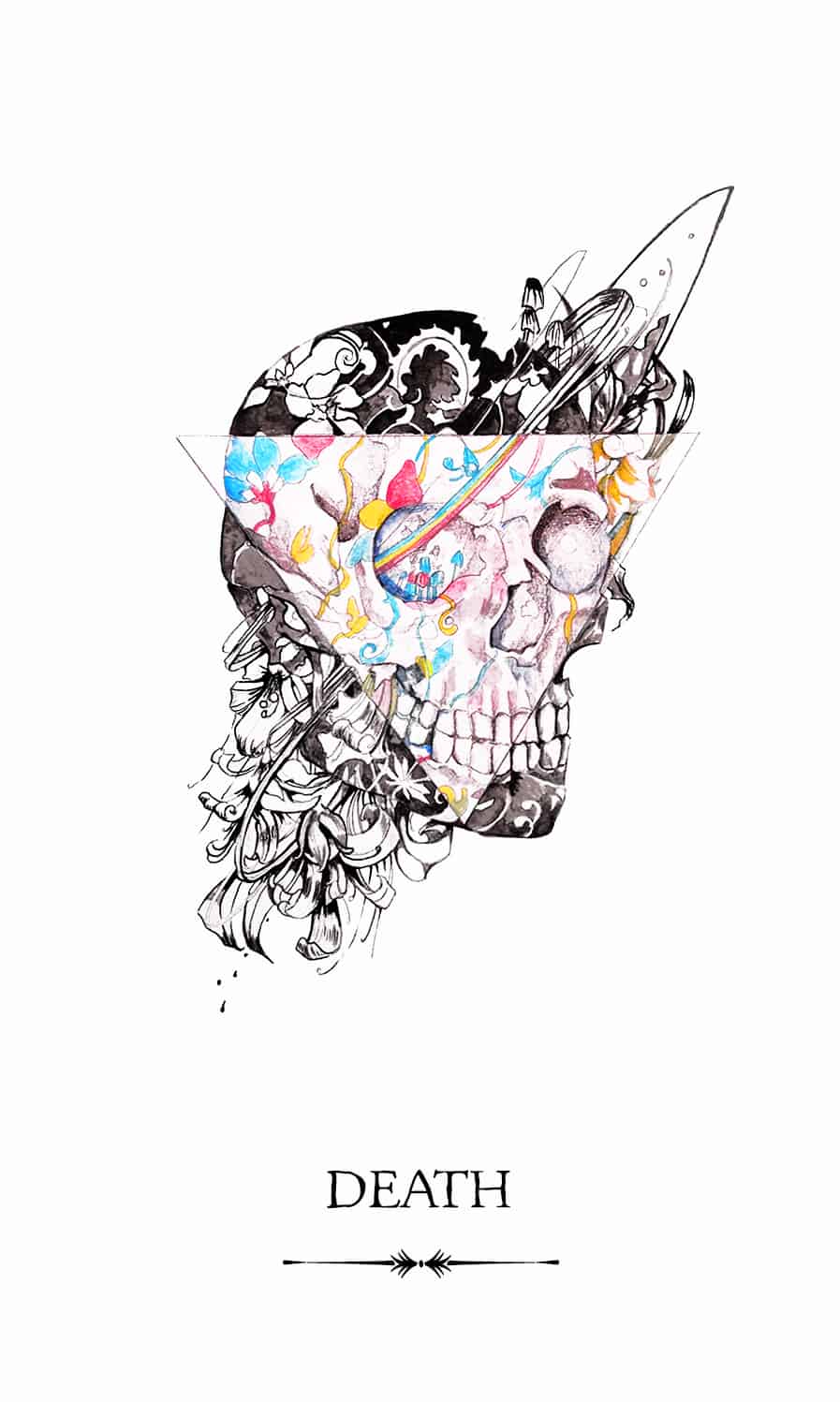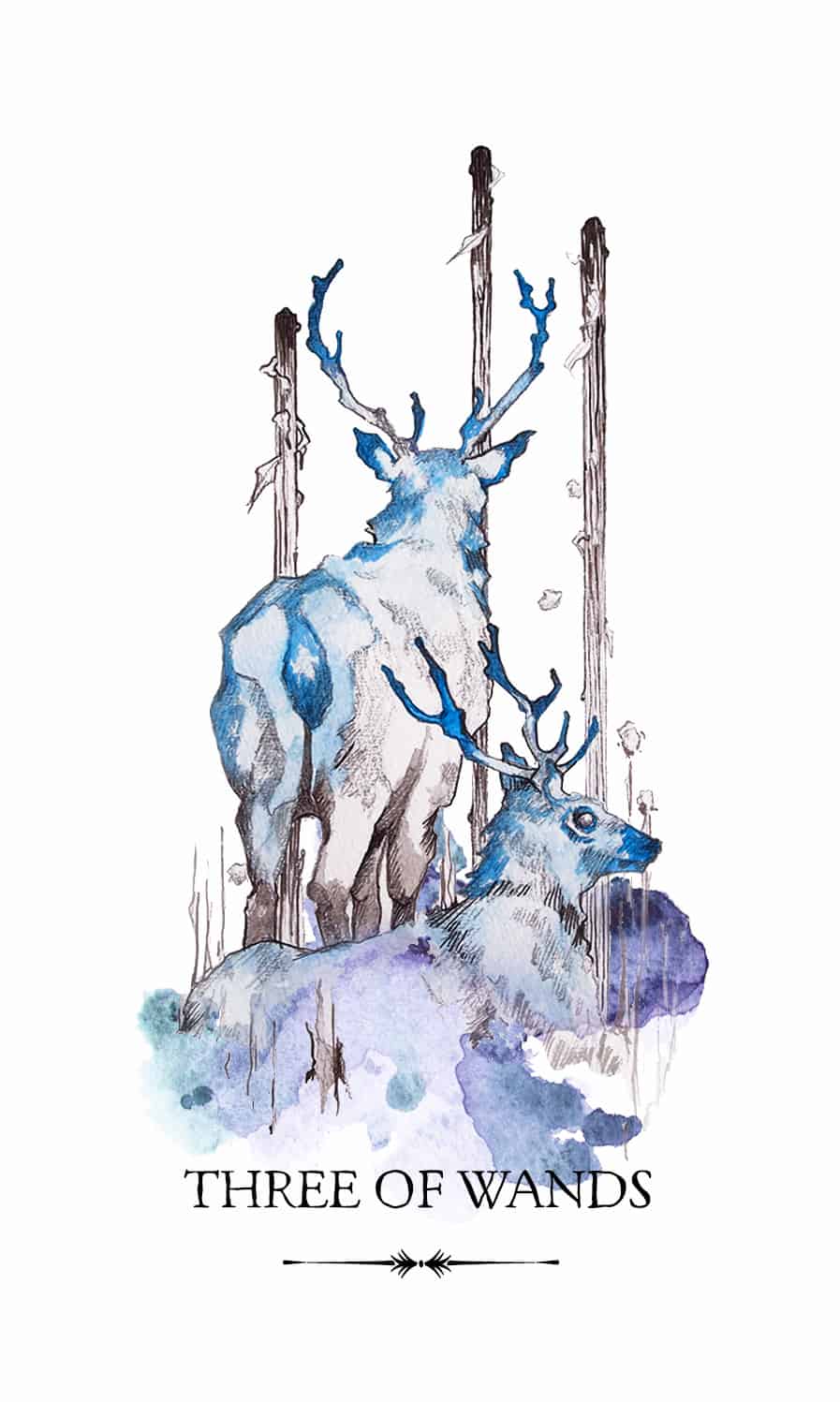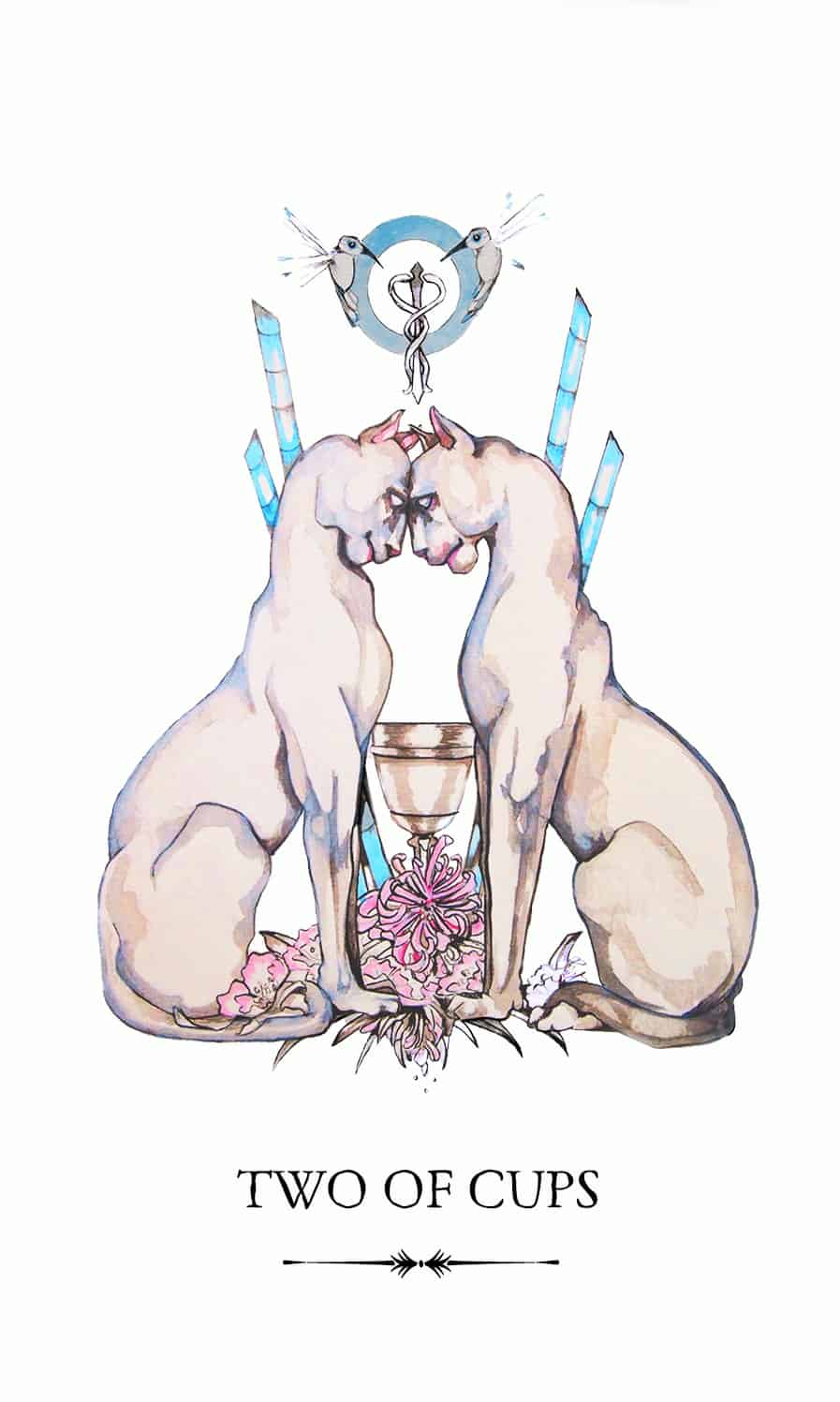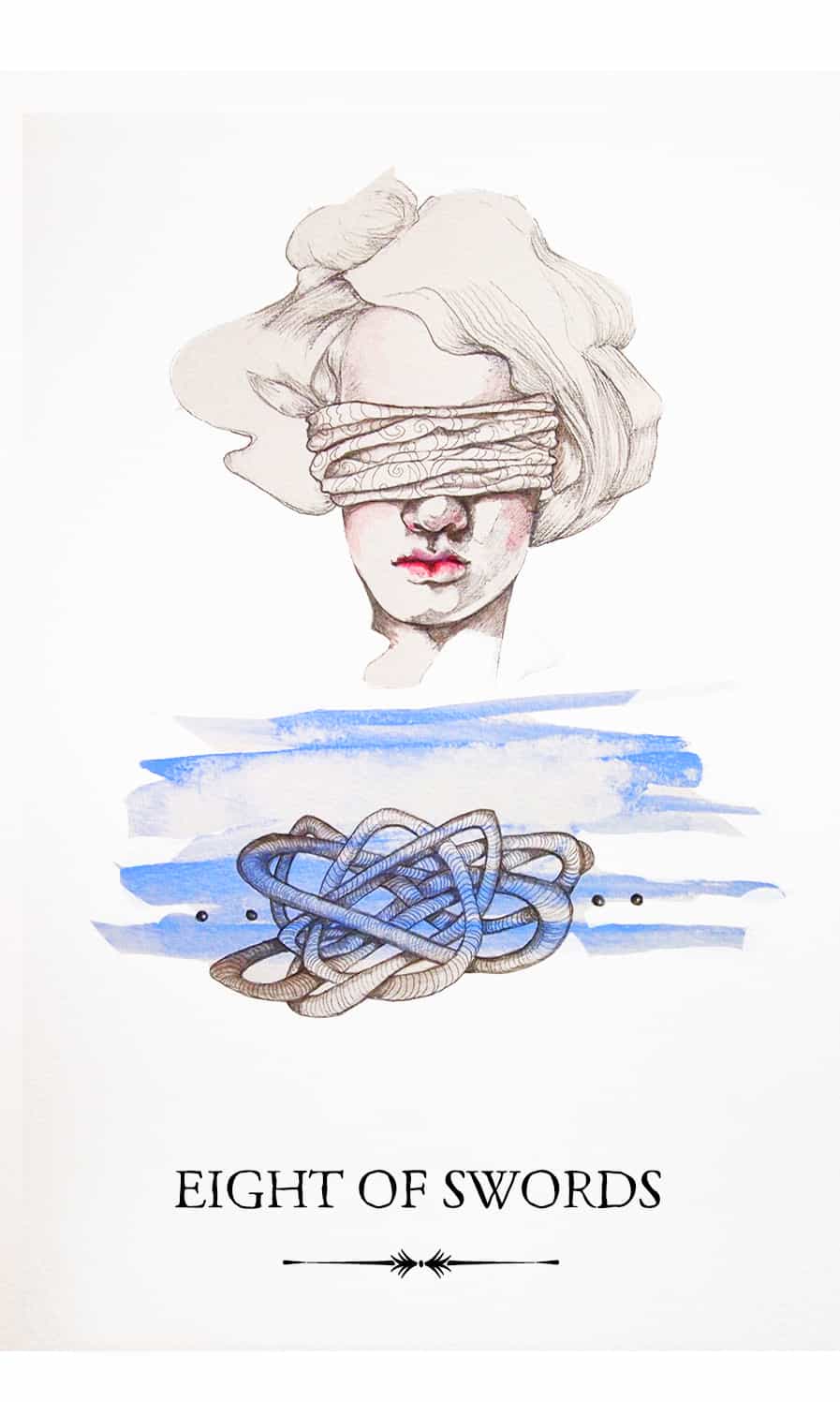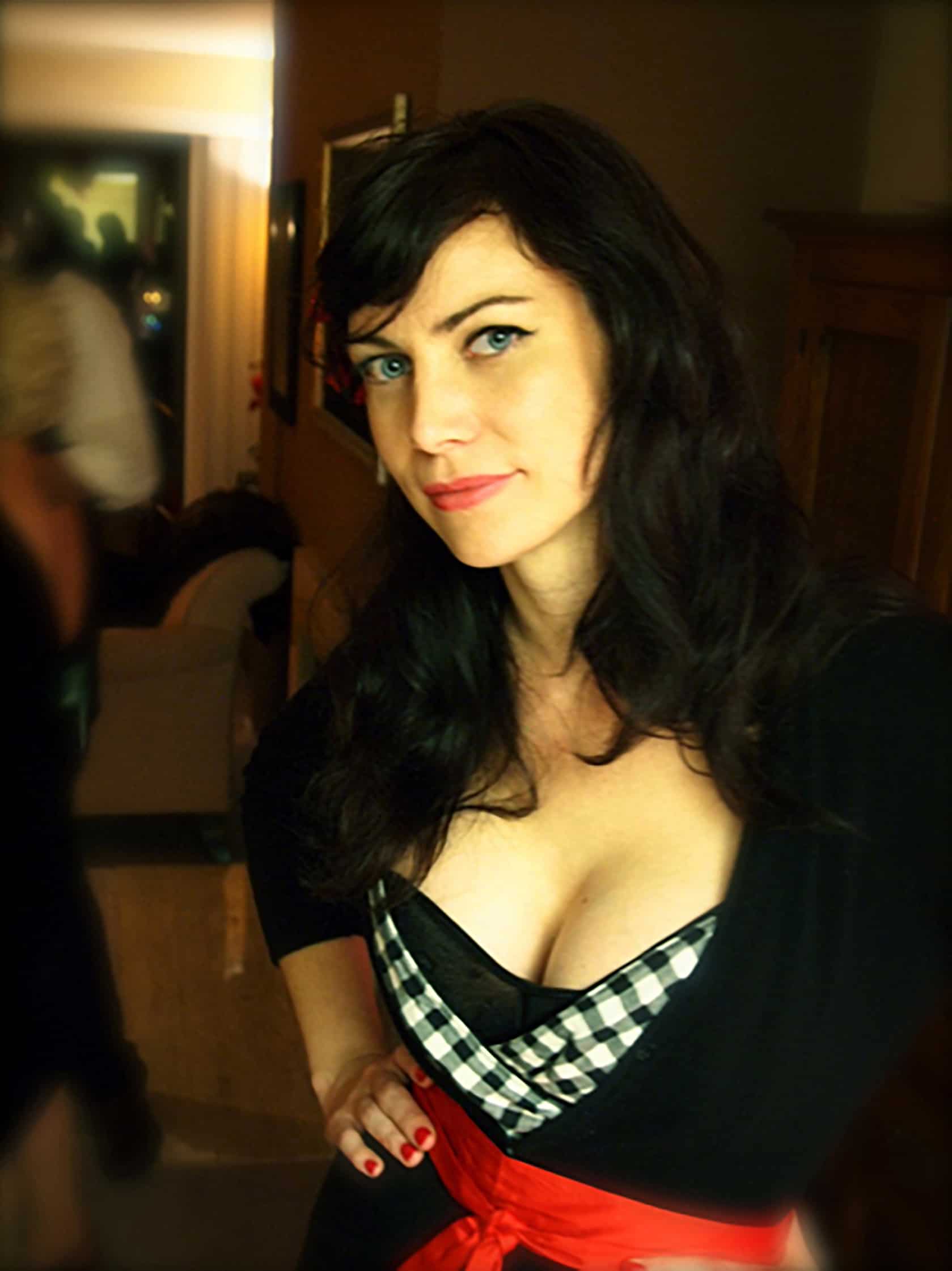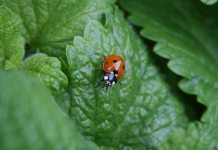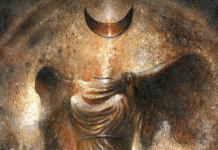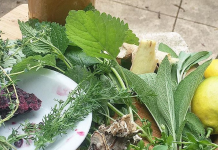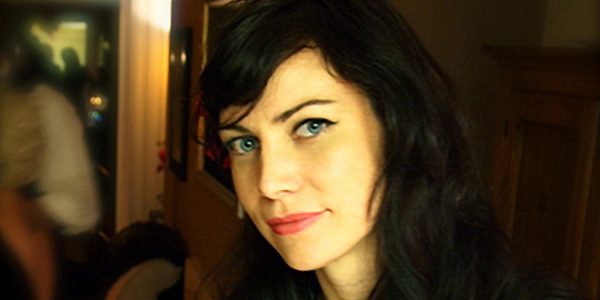
I discovered Siolo Thompson’s beautiful Linestrider Tarot when she submitted to Arcana: the Tarot Poetry Anthology.1 My publisher, the Seattle-based Minor Arcana Press, and I were very excited to use her work for the book’s cover and interior art.
Thompson was born in Apia, Western Samoa and, after years of international travel, has settled in Seattle, Washington. She is a self-taught visual artist with a background in Comparative Literature. You can learn more about her and view some of her work on siolothompson.com.
Recently, Thompson and I got together to talk about creating her Linestrider deck, which was published by Llewellyn Worldwide in May 2016.
Marjorie Jensen: Your explanation of “Linestriding” — drawing inspiration from the edge while still moving forward on the Fool’s journey — makes me think of liminality. Would you call your art liminal, or inspired by liminality?
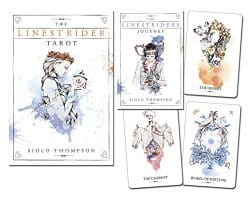 Siolo Thompson: Great question! Yes, my work is definitely occupying a liminal space. In particular I am intrigued with the space between definitions. Gender definitions for example, are any of us occupying one space completely? I also think many people occupy a liminal space between the animal and the purely human. For example, we frequently identify ourselves with a particular animal or animal spirit, I see that phenomena as liminal as well.
Siolo Thompson: Great question! Yes, my work is definitely occupying a liminal space. In particular I am intrigued with the space between definitions. Gender definitions for example, are any of us occupying one space completely? I also think many people occupy a liminal space between the animal and the purely human. For example, we frequently identify ourselves with a particular animal or animal spirit, I see that phenomena as liminal as well.
I love your use of animals in the Linestrider Tarot, because I think they can represent people of all different ethnicities. This seems especially significant with discussions about the whiteness of tarot coming up in Pagan communities, such as the #tarotsowhite hashtag on social media. Was this something you were thinking about when you chose to use animals in your deck?
Absolutely! I was very aware that most tarot decks only feature people who appear to be Caucasian. Using animals was one way of opening the deck to more diversity… That said, I don’t think I’m off the hook in this issue. I need to make more of an effort to include more diversity in my work. With the new project, I didn’t want to use people at all. However, Lenormand is almost impossible to read without a man and woman card. As an artist I struggle with how to represent people that aren’t white. The last thing I want to do is create some kind of caricature.
I think inclusivity is an ongoing process! It’s a choice we keep having to make.
That is completely true, and the onus of that effort must be on creators.
Exactly. It’s nice to hear how you are considering depth in your representations.
Oh, it plagues me! I want the things I create to be diverse, open, non-gender binary. It’s a lot to think about! I see it as my responsibility.
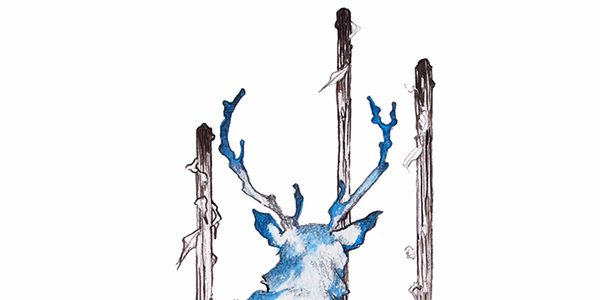
Indeed! To tie this back to your earlier comments about liminality and gender, I have another related question. I find the animals can easily represent queer relationships, such as using cats rather than a man and a woman in the Two of Cups. Was representation of queerness something that was on your mind during the creation of the Linestrider Tarot? You’ve answered this a little already but do you have more thoughts about gender, sexuality, and animals?
Ha! Yes. The Linestrider deck has a pretty feminine energy and I would say it’s definitely a queer-leaning deck. I tried pretty hard to keep gender specific relationships out the deck.
I think you did an excellent job of that!
There are a few cards, the 10 of Pentacles, for example, that specifically speaks of patriarchy, so I left that alone. But, yes, the Two of Cups and a few others — I wanted them to feel queer. To me the Magician, for example, has always been a strong gay man.
That’s such an interesting image! I can definitely see that.
The Emperor, that strong patriarchal figure, was the hardest card for me to draw. I probably made 10 versions of him. As a feminist I have real trouble with patriarchal energy! All queens all day!
I can relate! I had a similar struggle when writing my sonnets about the majors. The Emperor was very hard.
We could probably put together an anthology called “struggling with the Emperor.”
Yes! Or “feminists struggle with the Emperor.”
Yes! I love it!
In the Linestrider’s Journey, you mention that each of your cards includes a nod to Pamela Colman Smith’s art from the Rider-Waite-Smith deck and you reference Thoth Tarot titles in descriptions of your cards. For instance, your artwork for the Two of Pentacles is very reminiscent of Pamela’s juggler and your text about the Seven of Wands includes your love of the Thoth’s name for this card: “Lord of Valor.” Are there other decks that inspired your creation? What deck do you use the most?
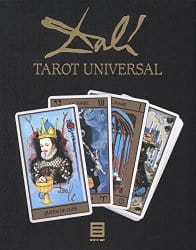 I am a fan of the Rider-Waite-Smith deck, that used to be my go to deck. Now I read with the Linestrider because I know all its little secrets! I don’t read Thoth Tarot, but I found it very useful during my research… I have Dali‘s deck which I love but cannot read from, it’s got chaotic male energy. The Tarot of the Hidden Realm is nice. Anything Barbara Moore has written the text for, I’ll try because I love her work.
I am a fan of the Rider-Waite-Smith deck, that used to be my go to deck. Now I read with the Linestrider because I know all its little secrets! I don’t read Thoth Tarot, but I found it very useful during my research… I have Dali‘s deck which I love but cannot read from, it’s got chaotic male energy. The Tarot of the Hidden Realm is nice. Anything Barbara Moore has written the text for, I’ll try because I love her work.
I love hearing how tarot creators use their own decks! The creator of the Orbifold Tarot said he also only uses his deck for similar reasons.
When reading tarot, I think confidence is what gives you the calm you need to really connect with your intuition. Reading with my own deck is stress free because each card is an old familiar friend.
Did you come across how the Golden Dawn members used to make their own tarot cards as part of their rituals to ascend in the order? The tarot creation process seems very magical in and of itself.
I am so intrigued by everything’s about the Golden Dawn, their scrying practice is what gave my Lenormand deck its name! And yes, I’ve actually been thinking about doing a handmade deck that can actually be used.
I think that the life force you put into the creation of a deck is so significant that it becomes magick. But I think that’s true for so many things! It’s why I collect original art and handmade objects.
And poetry!
Making as magick. Yes! Writing a thing into life. Golems of words.
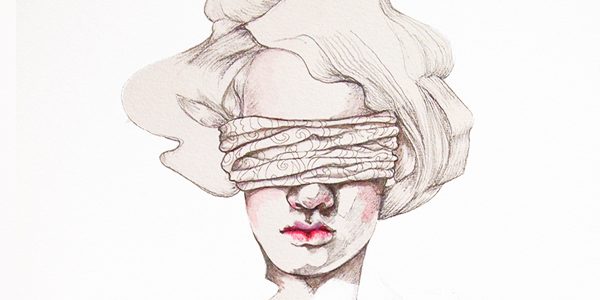
The associations between tarot cards and plants in your book are very unique. This immediately made me think of how plants are used as symbols in literature, and then I noticed that you have a background in comparative literature. How did poetic uses of plants play a part in developing your associations?
I am a total plant nerd and the history of the Craft is so rooted in plants that it was hard to imagine creating a deck that didn’t include some herblore. Kitchen witches and hedge witches have been using these plants and associated archetypes for centuries and centuries, it’s the basis of physical science. And of course, the literary side of it is so rich… The references we see in literature points directly to this folkloric knowledge… The laurels of the triumphant, the curse of wormwood, the arrow that wounded Achilles.
Yes! And poets are known for knowing all the names of the plants. Poets as witches and magicians.
Exactly! Poets and bards, carrying the oral tradition of this knowledge. Weaving it into the work.
I love that and how you bring the oral tradition into a visual form. Another way of being liminal!
Yes! Doing both the writing and the art is very important to me. I needed everything to have that interplay between word and image, the historical and the contemporary.
I’m especially intrigued by your drawing and literary references, like the Seven of Swords being inspired by a Bible verse (Num. 23:22) and Treasure Island illustrated by N.C. Wyeth as well as the Tower being inspired by Akira Kurosawa’s films. Would you talk a little more about how your art stems from storytelling in various mediums?
Heh, yeah, aren’t we all full of references? I know the Bible very well, in fact, I learned to read from the Bible. I will never be able to get away from its influence but then again, Western history is Judeo-Christian and those influences are with us all. It is part of the collective subconscious. When I create something I let the river of all my influences flow. I’m not a Christian, but I don’t fight inspiration, even when it comes from the Bible, or Japanese film, or video games.
That’s lovely! Sounds very much like Yeats talking about the symbols directing poetry. Like you are a conduit of them.
Yes! Talk about liminal. Yeats was a big Pagan.
I love his stuff!
Me too! I’m deeply moved by some of his work. I definitely think he had an oracle quality.
I approach poetry as a vehicle for oracle, much like tarot. Speaking of poetry, I noticed there’s a lot of white space on your cards. Because I write and edit tarot poetry, I associated this with the white space on the page around lines in poetry. Was this a consideration of yours as well? What are some of your other style inspirations?
Yes, the white space is so important. I would equate it with beats of silence within a song or poem. With the tarot cards I wanted to leave a lot of space for the reader to enter the image, project into, almost as a meditative practice. That is also why I didn’t use borders on the cards. I wanted the images, their history, and the readers mind to flow together if at all possible. I’d probably say modernist poetry and prose were a huge influence on that part of the process.
Yes, the white space as breath!
Yes! Sometimes when I look at tarot cards that are too busy, with heavy borders, I can’t hear my own voice.
I also feel that you have a bit of abstraction that allows for the reader’s voice in your deck.
Completely! Part of that abstraction came about as the process itself. I started each drawing by dropping clean water on a blank page and then dripping ink into that water. Whatever appears on the paper I would use as the foundation of the drawing.
What a cool technique!
It produced some interesting results for sure.
I especially liked the knot being abstract in the Eight of Swords.
Thank you! Someone suggested that I should change the Eight of Swords to something more traditional but I’m really glad I didn’t.
That’s one of the cards I can be picky about. It and the Two of Swords. But your Eight came up in one of the first readings I did with the Linestrider, and it was very powerful. Even without the traditional swords around the woman in bonds.
Wow! That card really asks the querent to think hard about their situation. For me, the actual swords aren’t needed to get the point across.
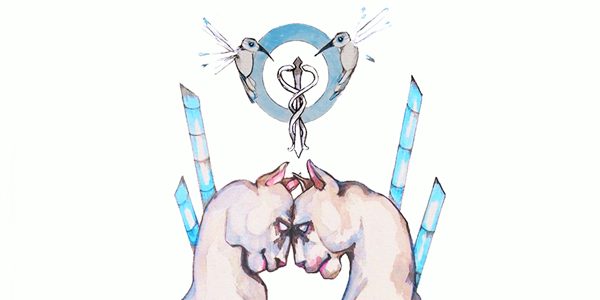
Ha! Nice pun on point. My grandmother read intuitively with playing cards, so I’m always curious as to why some tarot artists choose to deviate from the playing card tradition in the minor arcana. For instance, your Nine of Cups does not include nine cups. What made you decide to eschew the playing card tradition in some cases but not others?
Heh. I’m like an old man sometimes. As to the suits, When I stared the project I thought I would include represent each card with its attended suit (eight cups on the Eight of Cups), but it’s just not what the cards wanted. The whole process was highly intuitive, almost like a tarot reading. I didn’t go in order for example, I would pull a random card from my RWS deck, and that would be the drawing I would work on. I just didn’t always feel inspired to draw five swords or nine cups or what have you.
I think magick is so much about meaning in randomness. I also wrote my tarot sonnets out of order, based on inspiration.
Yes! It’s so important to trust the process. Nothing blocks my creativity like attempting to control it too much.
Well, I just have one final question for you. Is there anything else we didn’t touch upon that you would like to share with our readers?
Well, I love the point you made about diversity. That aspect of our community won’t change unless we change it. I’d love to see more artists and writers pushing the boundaries and bringing tarot into a more diverse space.


